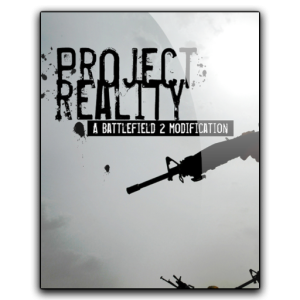Project Reality is a multiplayer shooter developed by a team of Project Reality team. The title began life as a modification of Battlefield 2, but after almost ten years of its existence, the creators of the fashion were somehow forced (the production studio DICE has been withdrawn from sale) to create a standalone version. This was released at the end of May 2015 with version 1.3. During the game, players take control of multiple army soldiers representing the United States, Russia, Great Britain, Canada, France, Poland, Norway, Germany and other countries. The game offers a much more realistic approach to play than in the case of Battlefield 2, which grew out of Project Reality. During combat, they not only count the individual skills of individual soldiers, but also the cooperation between team members. A very important aspect of manufacturing is communication. Players talk to each other as part of their team, acting in a group agreement, and in addition Commander can communicate with the staff individually. A huge impact on the gameplay also has a realistic ballistic missiles, also affect the damage and range. Another factor contributing to the realism of the game is minimalistic HUD, which shows only the most important information. In addition, the soldiers themselves are not superheroes and move very strongly.
Our clash charges use different types of devices that perform the same different functions on the battlefield. We can support branch as a sniper spotter, gunner, medic, engineer or grenadier, among others. Fun takes place in several modes, and the battles can take part up to a hundred players, divided into eight-man teams. In attack and safe fight for control of the designated zones. In Insurgency one team has weapons caches and the other tries to destroy them. Next is to the Skirmish, the fun games dedicated to small teams (6 out of 6 people). In return, fight against the vehicular warfare vehicles and Command & Control-You have to destroy the enemy base before he crush us. For several years the development of mod lived more than forty maps based on real locations. In contrast to the ones included in Battlefieldzie 2, they are much larger, and some range can boast of eight square kilometers.

CPU: 2.4 GHz
RAM: 2 Gb (4 Gb if using Windows® Vista)
GPU: Video Card with at least 512 MB of RAM
HDD: 4 GB
Project Reality Multiplayer shooters depicting a modern or historical battlefield have been one of the most popular video game genres for many years. Although this genre has been dominated for years by new games from the Battlefield and Call of Duty series, every now and then a new title appears, which actually tries to surprise the player with previously unknown solutions in terms of gameplay. One of such titles is Undoubtedly Project Reality, which, although it is not a standalone game, but a modification to one of the older productions (Battlefield 2), not only fully deserves to be put in a row with fully professional productions, but also under many in terms of reasons it surpasses them.
Project Reality The main thing that distinguishes the popular PR from other games of the genre is its genuine emphasis on team play. This is not a Battlefield, where you can run the entire round individually across the entire map, destroying each enemy you come across. Here, even if you want to play the role of BePePe (Poor Fucking Infantry), you have to not only join the squad (up to 8 people), but also cooperate with others in this squad - follow the commander's orders, report contacts, move together. Only such an organized team has a chance of survival greater than the one-day training camp.
Project Reality But this is just the beginning. If the entire team is to have a chance to win, the individual squads must work together on an operational level. The infantry needs to provide transport (helicopters and APCs) to move around a large battlefield and logistics for retooling and securing the captured areas. Aircraft and fire support without identified and marked targets would have to operate virtually blind, while armored personnel carriers, without infantry support, would be quickly destroyed by enemy AT. Of course, there are many more such examples of necessary cooperation, and the game itself really perfectly reflects the interdependencies that occur between different types of troops on the real battlefield.